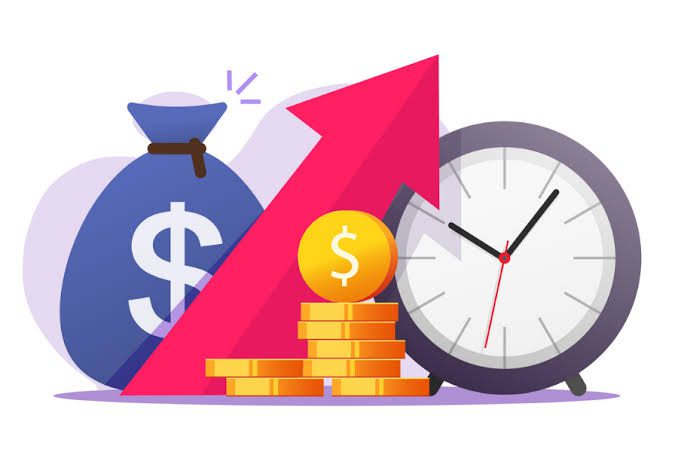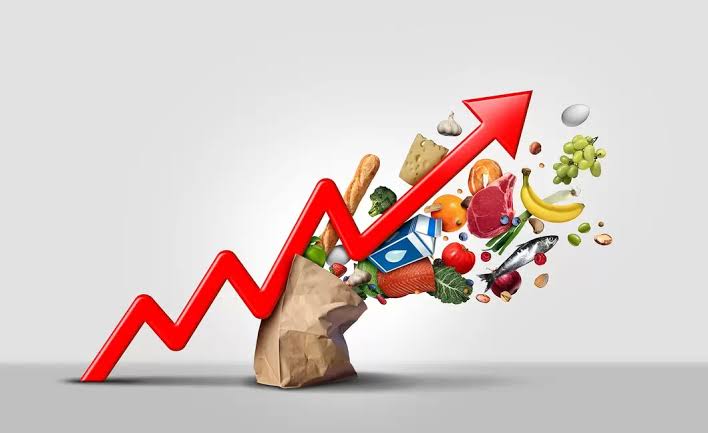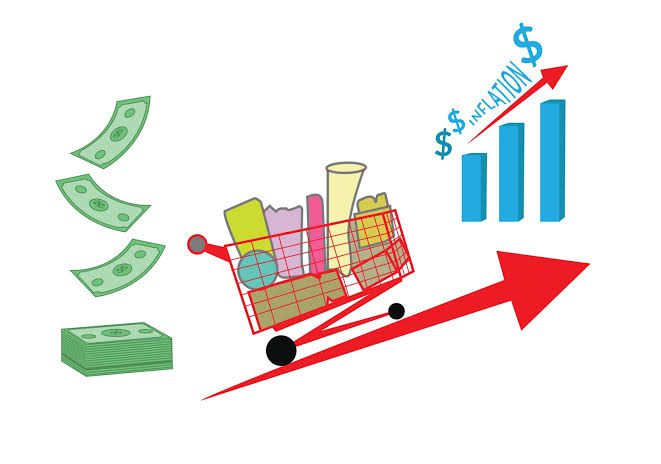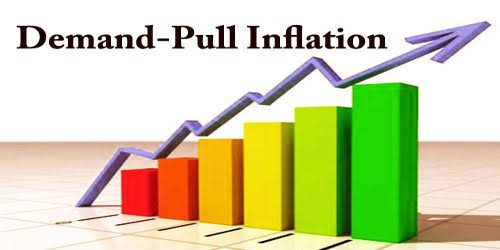Demand-pull inflation occurs when the demand for goods and services exceeds their supply. This means that more people want to buy products than there are products available. When this happens, businesses can charge higher prices because they know people are willing to pay more to get what they want. As a result, the overall price level of goods and services in an economy increases, leading to inflation.
One of the main sources of demand-pull inflation is an increase in consumer spending. When people have more money to spend, they buy more products. This can happen for several reasons. For example, if the government reduces taxes, people have more disposable income.
This extra money in their pockets encourages them to spend more. Similarly, if the government increases public spending, such as building new roads or schools, it can create more jobs and income, which leads to higher consumer spending. Another source of demand-pull inflation is when businesses invest more in their operations.
This investment can be in the form of buying new equipment, expanding their facilities, or hiring more workers. When businesses invest more, they often increase their production capacity, but it can also lead to higher demand for materials and labor. If this demand is not matched by an increase in supply, prices can go up.
Monetary policy can also lead to demand-pull inflation. Central banks control the money supply and interest rates. When central banks lower interest rates, borrowing becomes cheaper. This encourages people and businesses to take out loans and spend more money.
Increased spending can lead to higher demand for goods and services, pushing prices up. Additionally, if the central bank increases the money supply, people have more money to spend, which can also drive demand-pull inflation. Foreign demand can also cause demand-pull inflation.
If a country’s products become popular in other countries, the demand for these products increases. This increased foreign demand can lead to higher prices in the domestic market. For instance, if a country’s cars become popular overseas, car manufacturers might raise prices at home because they know there is strong demand abroad.
Changes in consumer and business expectations can also contribute to demand-pull inflation. If people expect prices to rise in the future, they are more likely to buy now rather than later. This rush to buy before prices go up can lead to higher demand and, consequently, higher prices. Businesses, anticipating higher costs in the future, might also increase their prices in advance, contributing to inflation.
Supply shocks can also lead to demand-pull inflation. If there is a sudden decrease in the supply of essential goods, such as oil or food, it can lead to higher prices. This can happen due to natural disasters, geopolitical events, or other disruptions. When the supply of these goods decreases, their prices go up. If these goods are essential for other products, their price increase can lead to higher prices for many other products, causing overall inflation.
Government policies and regulations can also play a role in demand-pull inflation. For example, if the government implements policies that restrict the supply of certain goods, it can lead to higher prices. Similarly, if the government imposes tariffs on imports, it can increase the cost of imported goods, leading to higher prices for consumers.
In some cases, government subsidies for certain industries can lead to higher demand for those products, contributing to inflation. Another factor that can cause demand-pull inflation is an increase in population. When the population grows, the demand for goods and services also increases.
This higher demand can lead to higher prices if the supply does not keep up with the growing population. Urbanization, where people move from rural areas to cities, can also lead to higher demand for goods and services in urban areas, contributing to inflation.
Technological advancements can also play a role in demand-pull inflation. When new technologies are introduced, they can lead to increased demand for new products and services. For example, the introduction of smartphones created a huge demand for these devices and related services. If the supply of these new products does not keep up with the high demand, prices can increase, leading to inflation.
Read Also: How to Locate the Cheapest Christmas Tree Shop Near You
How Can Demand-Pull Inflation Be Managed?

Demand-pull inflation occurs when the demand for goods and services exceeds their supply, causing prices to rise. Managing demand-pull inflation is crucial for maintaining economic stability. Several strategies can be employed to control this type of inflation, including monetary policy, fiscal policy, supply-side policies, and other measures.
1. Monetary Policy
Monetary policy involves the actions taken by a central bank to control the money supply and interest rates. The central bank can implement several measures to manage demand-pull inflation. Raising interest rates is a primary tool. When the central bank raises interest rates, borrowing costs increase.
This makes loans more expensive for consumers and businesses. As a result, people and companies are less likely to take out loans for spending or investment, which reduces overall demand in the economy. With lower demand, the pressure on prices decreases, helping to control inflation.
Reducing money supply is another strategy. The central bank can also reduce the money supply to manage inflation. This can be done through open market operations, where the central bank sells government securities. By selling these securities, the central bank absorbs money from the economy, reducing the amount of money available for spending. With less money in circulation, demand decreases, helping to control inflation.
2. Fiscal Policy
Fiscal policy involves government spending and taxation. The government can use fiscal policy to influence the level of demand in the economy. Reducing government spending is one approach. By cutting down on public spending, the government can reduce the amount of money flowing into the economy.
This decrease in spending can lead to lower demand for goods and services, which helps to reduce inflationary pressures. Increasing taxes is another method. Raising taxes on individuals and businesses can also help manage demand-pull inflation.
Higher taxes reduce disposable income for consumers and profits for businesses, leading to decreased spending and investment. With lower demand, the upward pressure on prices diminishes, helping to control inflation.
3. Supply-Side Policies
Supply-side policies aim to increase the productive capacity of the economy. By improving the supply of goods and services, these policies can help balance demand and control inflation. Encouraging investment is a key strategy.
The government can provide incentives for businesses to invest in new technologies, infrastructure, and other productive assets. Increased investment can lead to higher production capacity, which helps meet rising demand without causing prices to increase.
Improving labor market efficiency is also important. Measures to enhance labor market efficiency, such as training programs and better matching of workers to jobs, can increase productivity. Higher productivity means more goods and services are produced, which helps to meet demand and control inflation.
Reducing regulations can also be effective. Simplifying and reducing regulations can lower costs for businesses, allowing them to produce more efficiently. Lower production costs can lead to increased supply, which helps balance demand and control inflation.
4. Other Measures
In addition to monetary, fiscal, and supply-side policies, other measures can be taken to manage demand-pull inflation. Price controls are one option. In some cases, governments may impose price controls to limit how much prices can rise. While this can provide short-term relief from inflation, it is generally not a long-term solution as it can lead to shortages and reduced quality of goods and services.
Wage controls can also be used. Similar to price controls, wage controls can be used to limit wage increases. By controlling wages, the government can reduce the upward pressure on prices. However, wage controls can also lead to labor market distortions and are not usually considered a sustainable long-term strategy.
Promoting competition is another measure. Encouraging competition in various sectors of the economy can help control prices. When businesses face more competition, they are less likely to raise prices, which helps to manage inflation. Policies that reduce barriers to entry and promote fair competition can be effective in this regard.
Exchange rate policies can play a role as well. Managing the exchange rate can also help control inflation. A stronger currency can reduce the cost of imports, which can help lower overall price levels. Central banks can intervene in the foreign exchange market to influence the value of the currency and help manage inflation.
5. Combining Policies
In many cases, a combination of policies is necessary to effectively manage demand-pull inflation. For example, the central bank may raise interest rates while the government reduces public spending. By using multiple tools, policymakers can address different aspects of inflation and achieve more stable economic outcomes.
6. Monitoring and Adjusting Policies
Managing demand-pull inflation requires continuous monitoring of economic indicators such as inflation rates, employment levels, and GDP growth. Policymakers need to be flexible and ready to adjust their strategies as economic conditions change. This ongoing assessment helps ensure that policies remain effective in controlling inflation without causing undue harm to economic growth.
What are the Impacts of Demand-Pull Inflation on the Economy

Demand-pull inflation occurs when the demand for goods and services exceeds their supply, causing prices to rise. This type of inflation has significant impacts on the economy, affecting consumers, businesses, and overall economic stability. Below, we explore these impacts in detail:
1. Impact on Consumers
One major impact is on consumers. Increased cost of living is a direct result of demand-pull inflation. As prices rise, consumers face higher costs for everyday goods and services. This means that households need to spend more to maintain their standard of living. For those on fixed incomes, such as retirees, this can be particularly challenging as their income does not increase with inflation.
Reduced purchasing power is another consequence. Inflation erodes the purchasing power of money. As prices go up, each unit of currency buys fewer goods and services. This reduction in purchasing power can lead to decreased consumer confidence and reduced spending, as people feel less wealthy and more uncertain about their financial future.
Saving and investment decisions are also affected. Inflation can also affect how consumers save and invest their money. When inflation is high, the real value of savings decreases unless interest rates on savings accounts keep up with inflation. This may discourage saving and encourage spending or investing in assets that are expected to appreciate in value, such as real estate or stocks.
2. Impact on Businesses
The impact on businesses is equally significant. Higher production costs are a direct result. As demand-pull inflation sets in, businesses may face higher costs for raw materials, labor, and other inputs. These increased costs can reduce profit margins if companies are unable to pass the costs on to consumers through higher prices.
Price setting and competition become crucial. In an inflationary environment, businesses may increase their prices to maintain profitability. However, this can be a delicate balance, as raising prices too much can reduce demand for their products. Companies also need to consider their competition; if competitors do not raise prices, they may lose market share.
Uncertainty in planning is another challenge. High and unpredictable inflation creates uncertainty for businesses. This uncertainty can make it difficult for companies to plan for the future, whether in terms of investment, expansion, or hiring. Businesses may delay or reduce investments due to the unpredictability of future costs and revenues.
3. Impact on the Economy
Demand-pull inflation also impacts the overall economy. Economic growth can be both positively and negatively affected. In the short term, moderate demand-pull inflation can stimulate economic growth. When consumers and businesses expect prices to rise, they are more likely to spend and invest now rather than later, which can boost economic activity.
However, if inflation becomes too high, it can have the opposite effect, slowing economic growth as uncertainty increases and spending power decreases. Interest rates and monetary policy are closely linked to inflation. Central banks monitor inflation closely and may raise interest rates to control demand-pull inflation.
Higher interest rates can slow down economic activity by making borrowing more expensive, which can reduce consumer spending and business investment. This is a delicate balance, as raising rates too much or too quickly can lead to a recession.
Income distribution can be impacted by inflation. Inflation can affect different groups in the economy unevenly. For instance, workers with strong bargaining power or those in industries with high demand may see their wages rise with inflation. In contrast, workers in less powerful positions or fixed-income individuals may struggle to keep up with rising prices, leading to greater income inequality.
Exchange rates are another area where inflation has an effect. Inflation can impact a country’s exchange rate. High inflation may lead to a depreciation of the national currency, as foreign investors seek more stable currencies. A weaker currency can make imports more expensive, further fueling inflation, but it can also make exports cheaper and more competitive on the global market.
4. Long-Term Effects
Erosion of savings is a significant long-term effect. Over the long term, sustained high inflation can erode the value of savings and fixed-income investments. This can discourage long-term saving and investment, which are crucial for economic growth and stability. People might turn to alternative investments, such as real estate or precious metals, which can have their own risks and consequences.
Adjustment of contracts is another long-term consequence. Inflation often leads to the adjustment of long-term contracts, including wages, rents, and loans. These adjustments can create administrative burdens and uncertainty. For example, labor contracts may need to include cost-of-living adjustments to keep up with inflation, adding complexity to wage negotiations.
Impact on government budgets is also notable. Governments also feel the impact of inflation. While inflation can increase tax revenues as incomes and prices rise, it also increases the cost of government services and interest payments on debt. If inflation is high, governments may need to increase spending on social programs to help those affected by rising costs, potentially leading to larger budget deficits.
5. Inflation Expectations
Behavioral changes can occur due to inflation expectations. Expectations of future inflation can influence current economic behavior. If businesses and consumers expect prices to keep rising, they may change their behavior in ways that can actually contribute to inflation.
For example, consumers might buy more now to avoid higher future prices, and businesses might raise prices in anticipation of higher costs, creating a self-fulfilling cycle of inflation. Wage-price spiral is another potential outcome.
When inflation expectations become entrenched, it can lead to a wage-price spiral. Workers demand higher wages to keep up with rising costs, and businesses raise prices to cover higher wage expenses. This cycle can be difficult to break and can lead to sustained high inflation if not managed carefully.
Read Also: How to Setup A Bass Pro Shop
The Benefits of Demand-Pull Inflation: How to Maximize Your Savings

Demand-pull inflation occurs when the demand for goods and services in an economy exceeds their supply, causing prices to rise. While inflation is often viewed negatively, moderate demand-pull inflation can offer several benefits. Understanding these benefits can help individuals maximize their savings and investments during periods of inflation.
One benefit of demand-pull inflation is that it can stimulate economic growth. When prices are expected to rise, consumers and businesses are more likely to spend and invest rather than hold onto their money. This increased spending can boost economic activity, leading to higher production and employment.
For individuals, this means more job opportunities and potentially higher wages as businesses seek to meet growing demand. To maximize savings in this environment, individuals can look for opportunities in sectors experiencing growth, such as investing in stocks of companies that benefit from increased consumer spending.
Inflation can also reduce the real value of debt. As prices and incomes rise, the fixed amount of debt owed becomes easier to manage. For example, if you have a mortgage with a fixed interest rate, the amount you owe does not change even though your income may increase with inflation.
This means you can pay off your debt with money that is worth less in real terms, making debt repayment easier. To take advantage of this, individuals can consider locking in low-interest rates on loans and mortgages before inflation rises. By doing so, they can benefit from the reduced real value of their debt over time.
Another benefit of demand-pull inflation is that it can encourage investment in assets that appreciate in value. During periods of inflation, assets such as real estate, stocks, and commodities often increase in value. Investing in these assets can provide a hedge against inflation and help preserve the purchasing power of your savings.
For instance, real estate typically appreciates over time and can generate rental income that keeps pace with inflation. Stocks of companies with strong pricing power can also perform well during inflationary periods, as they can pass on higher costs to consumers. By diversifying your investments across different asset classes, you can protect your savings from the eroding effects of inflation.
Inflation can also lead to higher nominal interest rates on savings accounts and fixed-income investments. While the real return may not increase significantly, the nominal return can still provide some protection against inflation.
To maximize savings, individuals can look for high-yield savings accounts, certificates of deposit, and Treasury Inflation-Protected Securities (TIPS). TIPS are government bonds specifically designed to protect against inflation. The principal value of TIPS increases with inflation, ensuring that the interest payments and final payout keep pace with rising prices.
Understanding the tax implications of inflation can also help maximize savings. Inflation can push individuals into higher tax brackets, increasing their tax burden. However, some tax-advantaged accounts, such as individual retirement accounts (IRAs) and 401(k) plans, allow for tax-deferred growth.
By contributing to these accounts, individuals can reduce their taxable income and benefit from tax-deferred growth on their investments. Additionally, certain expenses, such as mortgage interest and medical expenses, may be deductible, providing further tax benefits. Being aware of these opportunities can help individuals manage their tax liability and maximize their after-tax savings.
Inflation can sometimes lead to wage increases, especially in sectors with high demand for labor. For individuals, this means negotiating for higher wages can be effective during inflationary periods. Keeping skills and qualifications up to date can make you more valuable to employers, increasing your bargaining power for wage increases. Higher wages can help offset the rising cost of living, allowing you to save and invest more effectively.
It’s also important to consider the timing of large purchases during inflationary periods. If you expect inflation to continue rising, it may be beneficial to make necessary purchases sooner rather than later. For example, buying a car or home before prices increase further can save you money in the long run. However, it’s essential to balance this with the need to maintain an emergency fund and avoid taking on excessive debt.
Finally, monitoring and adjusting your investment strategy is crucial during inflationary periods. Inflation can affect different sectors of the economy in various ways, so staying informed about economic trends can help you make better investment decisions. Regularly reviewing and adjusting your portfolio can ensure that it remains aligned with your financial goals and risk tolerance.
In conclusion, while demand-pull inflation can present challenges, it also offers opportunities to maximize savings and investments. By understanding the benefits of inflation, such as stimulated economic growth, reduced real value of debt, appreciation of certain assets, higher nominal interest rates, and potential tax advantages, individuals can make informed financial decisions.
Strategies like investing in appreciating assets, contributing to tax-advantaged accounts, negotiating for higher wages, timing large purchases wisely, and regularly adjusting investment portfolios can help mitigate the negative effects of inflation and enhance financial stability. By being proactive and informed, individuals can navigate inflationary periods more effectively and protect the value of their savings.
Read Also: How to Start an Urban Farm






